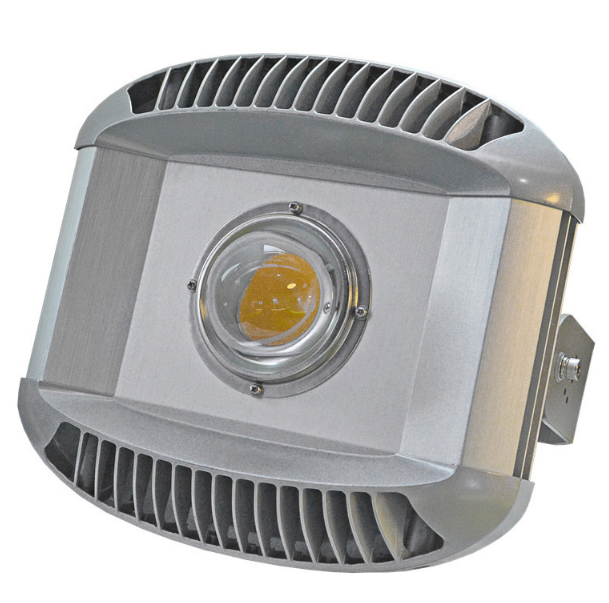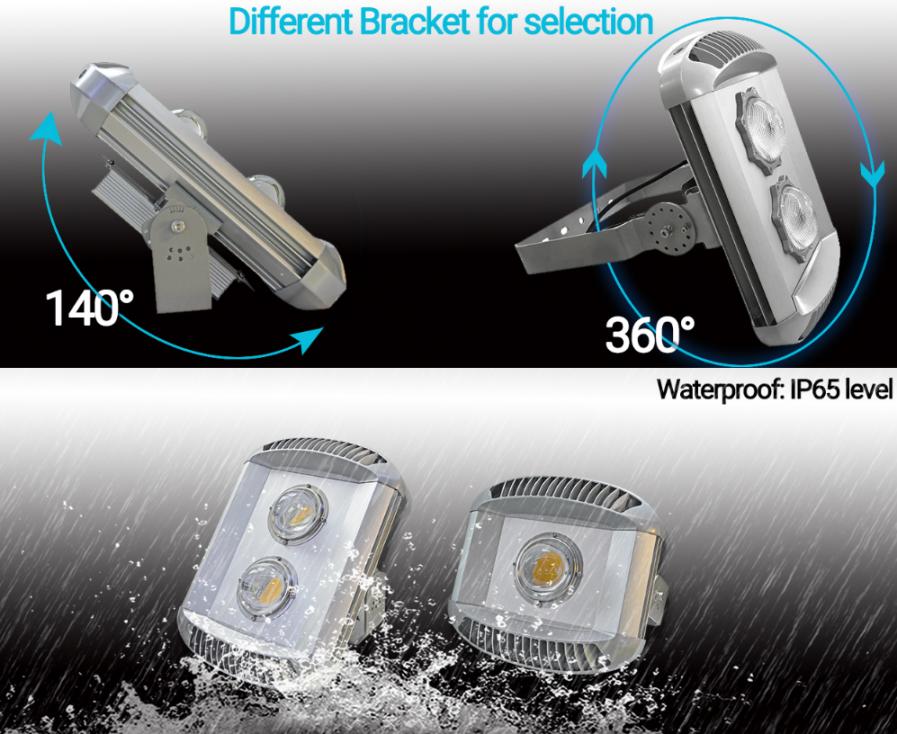When it comes to designing lighting systems for tunnels, especially in the context of railway infrastructure, the stakes are high. A well-designed tunnel lighting system not only ensures the safety and efficiency of rail transport but also meets stringent standards for visibility, energy efficiency, and durability. With thousands of tunnels spanning the world’s railway networks, selecting the right tunnel light is crucial for meeting these demands. So, what are the key factors to consider in the design and implementation of tunnel lighting, and how can cutting-edge technologies like K-COB high-quality COB LED lights improve these systems?
1. Safety and Visibility: A Top Priority
One of the most critical aspects of tunnel lighting for railways is safety. The primary goal of any tunnel lighting system is to provide optimal visibility for both drivers and passengers, allowing them to navigate through dark, confined spaces with confidence. Without proper illumination, the risk of accidents and reduced visibility increases significantly, especially during adverse weather conditions or at night.
The K-COB tunnel lights are specifically designed to enhance visibility and ensure safety in tunnels. These high-quality COB (Chip on Board) LED lights feature a range of light distribution angles (60°, 90°, 120°) and a color temperature range of 2200K–6500K, making them adaptable to different tunnel requirements. The high boron glass lens further improves the light distribution and reduces dust accumulation, which can otherwise obscure the lights and reduce their efficiency.
2. Durability and Weather Resistance
Another crucial factor to consider when designing tunnel lighting systems is durability. Tunnels are exposed to harsh conditions: road salt, exhaust fumes, water, dirt, and extreme fluctuations in temperature. The lighting system must withstand these environmental stresses over long periods to minimize maintenance and replacement costs.
The K-COB tunnel lights are designed with robust materials like the AL6063 aluminum heat sink, which provides efficient heat dissipation and ensures the longevity of the lights. Rated at IP65, these lights are fully protected against dust and water, making them ideal for both underground and outdoor applications, including railway tunnels that often experience challenging conditions.
3. Energy Efficiency: Reducing Operational Costs
Energy efficiency is a critical concern for any large-scale infrastructure project, and tunnel lighting is no exception. With high-power lighting systems running 24/7 in some tunnels, the energy costs can be significant. This is where technologies like LED lighting come into play.
The K-COB LED lights offer significant energy savings compared to traditional tunnel lighting solutions. By utilizing advanced phosphor-ceramic LED chips, K-COB lights deliver higher luminous efficacy, which translates to more light output per watt of energy consumed. The reduced power consumption not only leads to lower electricity bills but also helps minimize the environmental impact of the lighting system. Furthermore, the smart control systems compatible with K-COB lights allow for additional energy savings through automatic dimming and on-demand lighting adjustments.
4. Design Flexibility: Tailoring Lighting Solutions to Specific Needs
Tunnels come in various shapes, sizes, and configurations, which means there is no one-size-fits-all solution for tunnel lighting. The lighting design must be adaptable to the specific needs of the tunnel, taking into account factors like the type of transportation (railway, road, etc.), tunnel geometry, and local environmental conditions.
The versatility of K-COB tunnel lights makes them an excellent choice for railway tunnels. With adjustable beam angles and a range of color temperatures, these lights can be tailored to suit the specific requirements of different tunnel projects. Whether it’s a long, straight tunnel or a short, curved passage, K-COB lights can be configured to provide uniform illumination that meets visibility standards and reduces dark spots, enhancing both safety and comfort for passengers and operators.
5. Long Lifespan: Reducing Maintenance Costs
The lifespan of tunnel lights is another critical consideration. Given the difficulty and cost of maintaining lighting systems in tunnels, it’s essential to choose fixtures that are long-lasting and require minimal upkeep.
K-COB tunnel lights are engineered for durability and reliability, with an impressive lifespan of up to 55,000 hours. This extended lifespan significantly reduces the need for frequent replacements and maintenance, ultimately lowering operational costs over the life of the tunnel lighting system. Additionally, the impact-resistant design of K-COB lights ensures that they can withstand the rigors of tunnel environments without compromising performance.
6. Regulatory Compliance: Meeting Industry Standards
Tunnel lighting systems are subject to strict regulatory requirements to ensure they meet safety and operational standards. For railway tunnels, these regulations may include criteria related to illumination levels, uniformity of lighting, and emergency lighting provisions.
K-COB tunnel lights are designed with these regulations in mind. The lights are LM-80 certified, a crucial industry standard that ensures the lights maintain their performance over time and meet energy efficiency requirements. The phosphor-ceramic technology used in K-COB lights also supports high luminous efficacy, ensuring that the lights can achieve the required lux levels while using less power.
Energy-Efficient Tunnel Lighting: How to Save Costs in Large-Scale Projects
Tunnel lighting represents a significant portion of the energy consumption in large-scale infrastructure projects, particularly in underground and enclosed spaces like railways, road tunnels, and subways. With sustainability becoming a priority across the construction and transportation industries, finding energy-efficient lighting solutions is more critical than ever. In this section, we’ll explore how energy-efficient tunnel lighting can help reduce costs in large-scale projects, with a focus on K-COB’s advanced COB LED technology.
1. The Importance of Energy-Efficient Tunnel Lighting
In tunnels, lighting is on almost all the time, with systems often running 24/7 in high-traffic areas like train stations and road tunnels. This constant usage can lead to substantial energy bills and environmental impacts. As a result, project managers and contractors are increasingly looking for energy-efficient lighting solutions that can help them save on operational costs and meet sustainability goals.
K-COB tunnel lights provide an ideal solution by utilizing cutting-edge phosphor-ceramic LED technology. Compared to traditional HID or halogen lights, K-COB LEDs offer higher light output with lower energy consumption. This means you get the same or even better illumination while reducing your overall electricity usage. The advanced thermal management features, such as the AL6063 aluminum heat sink, also ensure that the lights operate at optimal efficiency without wasting energy as heat.
2. Long-Term Cost Savings with High Efficiency
While the initial investment in high-quality LED lighting like K-COB may be higher than conventional options, the long-term savings are significant. The energy-efficient design of K-COB tunnel lights allows for substantial reductions in operating costs over time. Furthermore, their long lifespan (up to 55,000 hours) means less frequent replacements, reducing both maintenance costs and the need for ongoing replacement of components.
The ability to install smart control systems compatible with K-COB lights also allows for automated dimming and real-time adjustments based on factors like traffic flow or ambient light levels, further enhancing energy savings. This means less energy is used during low-traffic periods or at night when the tunnel doesn’t require full illumination.
What Are the Key Challenges in Tunnel Lighting for Mining Projects?
Mining tunnels present some of the most extreme conditions for lighting systems. From exposure to dust, moisture, and chemicals to the challenges of maintaining visibility in dark, confined spaces, the lighting system in mining tunnels must meet specific requirements to ensure the safety and productivity of workers. In this section, we’ll look at the key challenges involved in tunnel lighting for mining projects and how K-COB’s advanced LED technology can help overcome them.
1. Harsh Environmental Conditions
Mining tunnels are typically subject to harsh environmental conditions that can take a toll on lighting systems. Dust, water, extreme temperatures, and high humidity are just a few of the factors that can affect the reliability of lighting systems in these environments.
K-COB tunnel lights are built to withstand these challenging conditions. With an IP65 rating for dust and water resistance, and an impact-resistant design, K-COB lights are ideal for mining applications where durability and reliability are paramount. The high boron glass lens also reduces the accumulation of dust on the surface, maintaining optimal light performance over time.
2. High Illumination Demands
Unlike transportation tunnels, mining tunnels often require higher levels of illumination to ensure worker safety and operational efficiency. Adequate lighting is necessary for tasks like drilling, inspection, and material handling, where workers must navigate through dark, sometimes hazardous spaces.
With their high luminous efficacy, K-COB tunnel lights provide powerful, uniform illumination that meets the stringent lighting demands of mining tunnels. Their adjustable beam angles and customizable color temperatures allow for flexibility in light distribution, ensuring that all areas of the tunnel are adequately illuminated for safe and efficient work.
How Tunnel Lights Improve Safety Standards for Underground Projects
Lighting plays a critical role in improving safety standards in underground projects like tunnels, subways, and mines. Proper illumination helps prevent accidents, reduces the risk of fatigue, and ensures that workers and drivers can safely navigate through these confined spaces. Let’s take a closer look at how tunnel lights, especially high-quality solutions like K-COB LED lights, contribute to safety in underground projects.
1. Enhancing Visibility and Reducing Hazards
Proper lighting is essential for creating clear visibility and reducing hazards in tunnels. Poorly lit areas can create dark spots that lead to accidents, while inconsistent lighting can cause confusion for drivers and workers. By providing uniform illumination throughout the tunnel, K-COB tunnel lights help eliminate these risks.
Their high CRI (Color Rendering Index) ensures that colors and details are visible, improving situational awareness for tunnel users. Whether it’s for traffic management in railway tunnels or for safety inspections in mining tunnels, reliable lighting is crucial for maintaining safe working conditions.
2. Improved Emergency Response Capabilities
In case of an emergency, having bright and reliable lighting can significantly enhance response times and safety. K-COB’s smart control systems allow for automated adjustments based on emergency situations, ensuring that lighting levels are increased where needed to guide people safely out of the tunnel.
Conclusion
For those looking to design or upgrade tunnel lighting systems for large-scale projects, K-COB tunnel lights offer a comprehensive solution that addresses safety, durability, energy efficiency, and environmental sustainability. With advanced technologies and unmatched reliability, these lights set a new standard for tunnel lighting in diverse sectors like railway, mining, and road infrastructure.
Post time: Dec-16-2024






